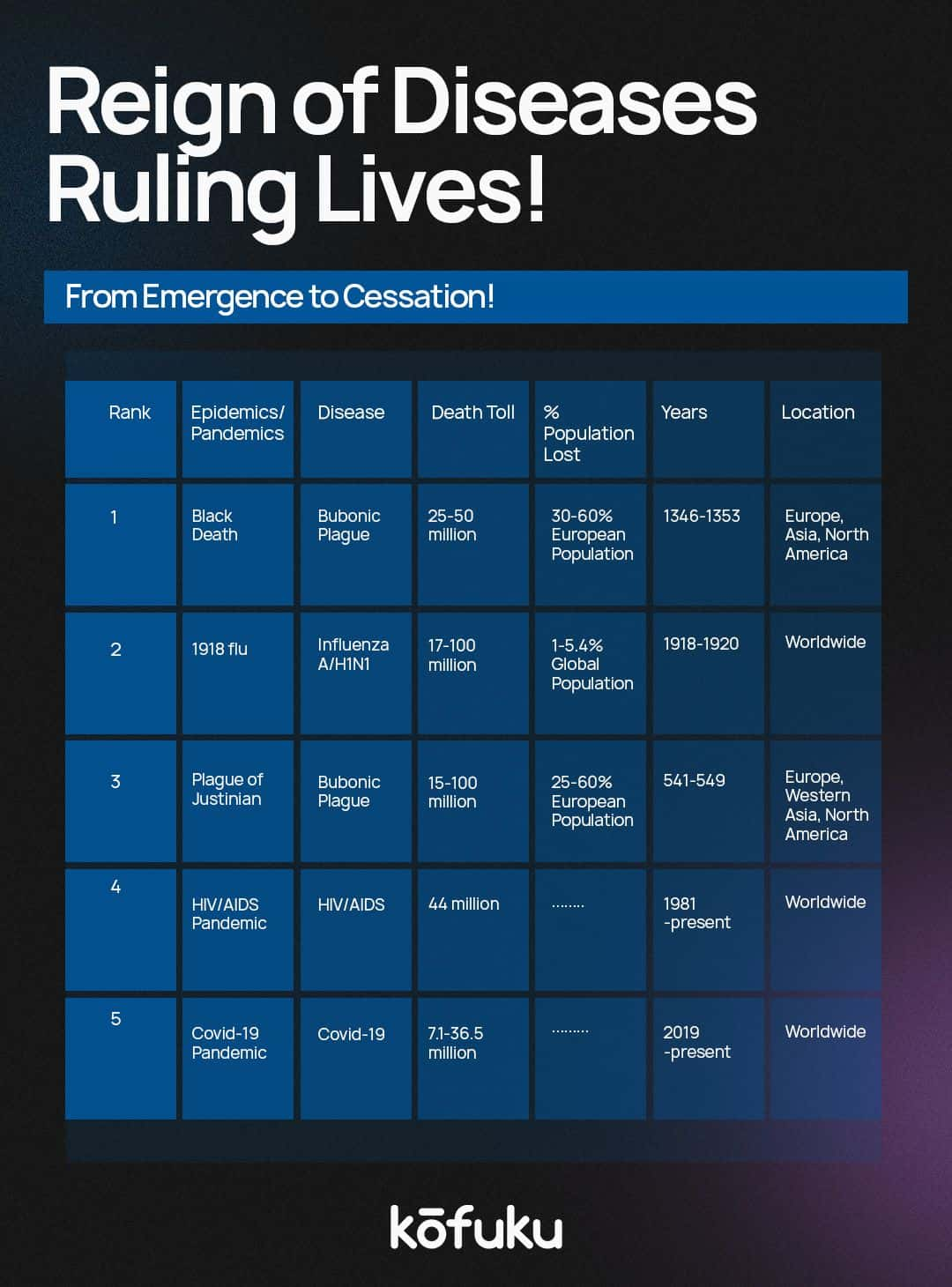Impact of Contagion on Healthcare Systems and Policies

Introduction
The first symptom is one of annoyance, then comes the tickle in the throat, the sudden onset of a cough, and the lingering feeling of dread. The spectre of contagion hangs over us all, a constant reminder of our interconnectedness and vulnerability.
But how exactly do these invisible foes spread, and how does this exact impact of contagion on healthcare systems shape its very fabric?
What is a Contagion?
Know thy enemy, know thyself. Contagion can wage wars, conquer and rule. A tyrant who keeps expanding his lands. It's the evil twin of Alexander the Great. Ironically, there's a whole conspiracy theory that posits he could have died of, you guessed it, an infectious disease.
Contagion, without all the fanfare, simply put, is disease transmission from one individual to another. It's like a game of infectious whispers, where the message – the disease – gets passed along through various means. And yes, it sounds gross, and the game of Chinese whispers has been forever ruined.
This can happen through direct contact (like a handshake), indirect contact (touching a contaminated surface), respiratory droplets (coughing or sneezing), or even through vectors like mosquitoes (the bane of everyone's existence).
Disease Spread and Healthcare Protocols
The healthcare world is constantly battling the ever-evolving threat of infectious diseases. WHO runs constant updates and news on all known and unknown infections that can spread. They do the same with COVID-19, Nipah Virus and CHPV to keep the population up-to-date and take necessary precautions.
Some of the notable healthcare responses to infectious diseases are:
1. Surveillance and Outbreak Investigation:
Public health agencies diligently monitor disease trends and swiftly investigate outbreaks. This involves collecting data, identifying cases, and tracing contacts to prevent further spread.
2. Vaccination Programs:
Vaccination remains one of the most powerful tools in our arsenal despite all the Karens waging an uneducated war against it. Mass vaccination campaigns have eradicated diseases like smallpox and significantly reduced the burden of others like polio and measles.
3. Antimicrobial Stewardship:
The judicious use of antibiotics is crucial to combat antibiotic resistance. Doctors are encouraged to prescribe antibiotics only when necessary and to complete the full course of treatment to prevent the emergence of drug-resistant strains.
Infection Prevention Strategies in Healthcare
Hand Hygiene:
The ads are not far from the truth. Washing your hands is literally the make or break for infection prevention! In fact, healthcare workers are rigorously trained on proper handwashing techniques to minimise the spread of germs.
Sterilisation and Disinfection:
Medical equipment and hospital environments are meticulously cleaned and disinfected to prevent the transmission of pathogens.
Isolation and Cohorting:
Patients with infectious diseases are often isolated to prevent the spread of infection to other patients and healthcare workers.
Most of these prevention tips are for healthcare workers as they come across the most risk of infectious diseases. But being hygienic as a layman and keeping your space free of germs through frequent cleaning also helps in a large-scale spread.
Most of the time, diseases spread in public spaces rather than in the sterile environment of hospitals. That's because infection control has come leaps and bounds in identifying and focusing on healthcare settings like hospitals. Leading to better management of the spread where there's a readily available source of immunocompromised people.

Recent Healthcare Advancements in India
In recent years, India has advanced itself by merging technology and medicine. From disease surveillance to timely emergency response, digital platforms are also used to track outbreaks, monitor vaccination coverage, and facilitate telemedicine consultations.
The government is also investing in strengthening primary healthcare infrastructure to improve access to quality healthcare services, especially in rural areas. More hospitals with better equipment. It's done through subcenters, primary health centres, and community health centres.
With Rural Hospital Network, which is run by a team of volunteers, it's also extremely easy to locate them. India is also shifting its focus on surveillance and control of zoonotic diseases (diseases transmitted from animals to humans), such as rabies and avian influenza.
How Contagion Dynamics Affect Healthcare Practices
Contagion, by its very nature, can affect how we approach existing healthcare practices because the spread of any particular infectious disease means the failure of the existing system. Thus, for every infectious disease that spreads, new protocols are presented, and old ones are reinforced.
Understanding how specific diseases spread helps policymakers develop nearly foolproof public health interventions. For example, data on the reproductive number (R0), which represents the average number of people infected by one infected person, can inform decisions about social distancing measures, travel restrictions, and resource allocation.
Contagion dynamics influence healthcare regulations like infection control guidelines, licensing requirements for healthcare facilities, and regulations for the transportation and handling of infectious materials. It essentially affects every aspect of existing regulations and thus needs a thorough look-through.
Every facility, big or small, must have emergency planning for contagion to respond to outbreaks. These plans outline procedures for identifying and isolating infected individuals, managing the surge of patients, and ensuring the safety of healthcare workers.
Healthcare Strategies for Managing Contagion
- Early Detection and Rapid Response:
Early detection of outbreaks is the best chance for effective containment. This involves tight surveillance systems, rapid diagnostic testing, and timely communication between healthcare providers and public health authorities—truly an all-hands-on-deck situation.
- Contact Tracing and Quarantine:
Identifying and isolating individuals who have come into contact with infected persons is the next step in breaking the chain of transmission. The less it spreads, the less we have to contain it. Not to forget the resources that can be saved for severe cases.
- Resource Allocation and Surge Capacity:
Healthcare systems must be prepared to handle a huge patient surge during an outbreak. Many hospitals struggled during the COVID-19 pandemic, and makeshift hospitals were arranged to deal with that. Better planning and preparation could have avoided this situation.
The preparation may usually involve increasing bed capacity, mobilising additional healthcare personnel, and procuring necessary medical supplies. The affected government should have to work fast, and it's only really a race against the disease itself.
- Influencing Healthcare Policy Through Contagion Data:
Data on disease transmission can be used to advocate for increased funding for public health programs, improve healthcare infrastructure, and promote health equity. It's much like citing the impact of floods on certain areas to improve the roads and rainwater distribution in those areas.
Funding for such projects needs solid evidence of the need. Collecting data on contagion can result in exactly that. It can also help us access our early detection methods to improve upon them.

Adapting Healthcare Practices for Contagion and Other Infectious Diseases
With so many outbreaks wreaking havoc on Indian citizens, it's important to acknowledge that the healthcare system has come a long way. At the same time, we must face the fact that there's more road to cover.
The healthcare landscape constantly evolves in response to the ever-changing threat of infectious diseases. And that's because of all the advancements that have been implemented so far.
- Antimicrobial Resistance:
The rise of antimicrobial resistance poses a significant challenge. Healthcare providers are increasingly focused on antimicrobial stewardship programs to prevent the emergence and spread of drug-resistant bacteria.
AMR has contributed to 4.95 million deaths worldwide and has become one of the top global public health and development threats.
- Emerging and Re-emerging Infectious Diseases:
The emergence of new infectious diseases like COVID-19 and the re-emergence of old ones, like Chandipura vesiculovirus (CHPV), require ongoing surveillance and rapid response efforts.
- Global Health Security:
The interconnectedness of our world necessitates a global approach to infectious disease control. International collaboration is crucial for sharing information, coordinating responses, and ensuring equal access to vaccines and treatments.
Conclusion
The spread of infectious diseases is a complex phenomenon with profound implications for healthcare systems worldwide. By understanding contagion dynamics, we can develop more effective strategies for prevention, detection, and response.
This requires a multifaceted approach that focuses on all aspects of preventing the spread of contagion and not just the medication part of it. Policies and regulations that reflect this approach are also needed. By working together, we can build a more resilient healthcare system that is better prepared to face the challenges of the future.


Breaking Antibiotics and Viral Infection Myths

The History, Impact, and Importance of Vaccines Worldwide

Dengue vs. Zika: Key Differences and Prevention Tips


